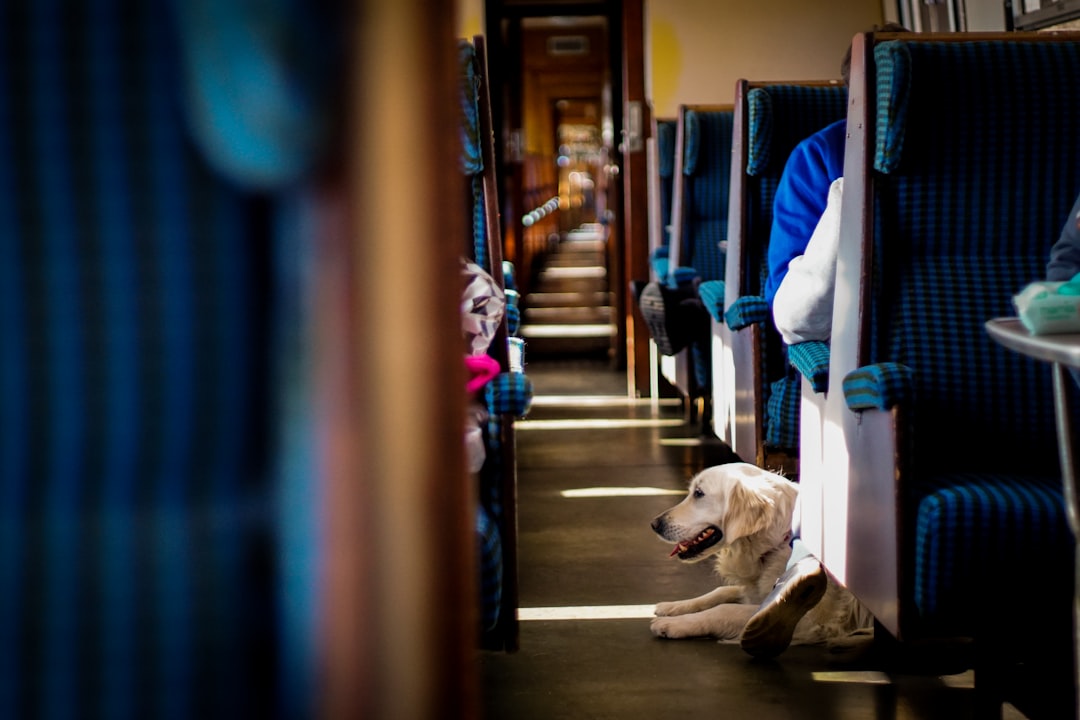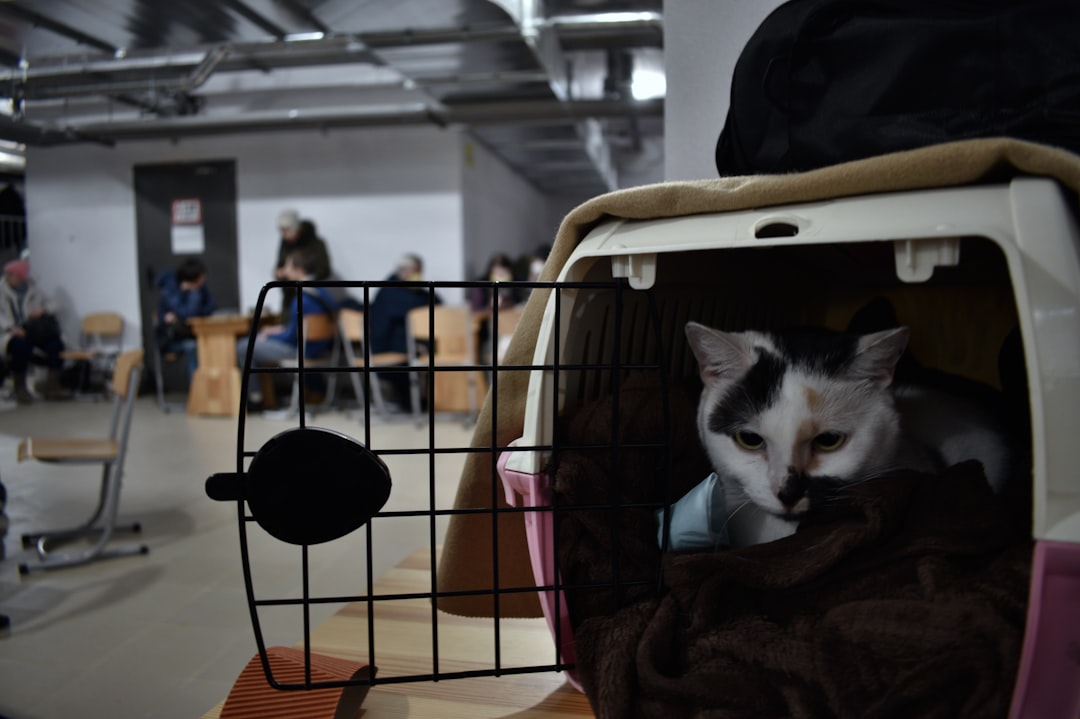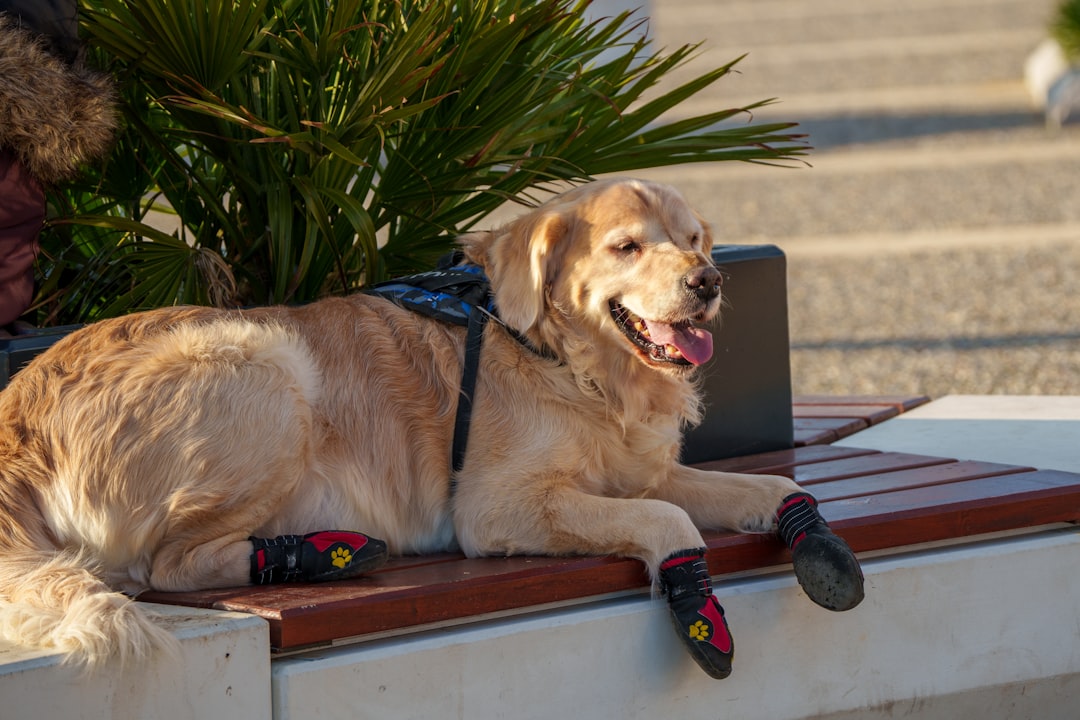

Engage prospects with a scan and streamline customer engagement with FREE QR code marketing tools by Sona – no strings attached!
Create a Free QR CodeFree consultation

No commitment

Engage prospects with a scan and streamline customer engagement with FREE QR code marketing tools by Sona – no strings attached!
Create a Free QR CodeFree consultation

No commitment
Pet boarding facilities are under mounting pressure as pet ownership surges and customer expectations shift toward more convenience, transparency, and high-quality care. These factors, combined with fierce competition, make it challenging for businesses in pet daycare, dog boarding, cat boarding, and luxury pet resort segments to distinguish themselves and streamline customer engagement at every stage.
A core challenge lies in bridging the gap between offline visits or marketing touchpoints and fast, frictionless digital engagement. Often, high-value prospects investigate services in person or consume print materials, yet never convert to booked stays because their interest is not captured in real time or tracked within the CRM using Sona QR’s product overview, leading to missed opportunities and lost revenue.
QR codes now offer pet boarding facilities a practical way to turn every physical asset, whether it is facility signage, printed brochures, or check-in materials, into an actionable digital gateway. This approach empowers tech-savvy pet owners to instantly reserve, review, or request information with a single scan, while equipping businesses to quickly capture leads, gather customer feedback, and connect engagement signals back to outcomes. For a primer, see QR codes in marketing.

Despite strong in-person interest, many pet boarding businesses lose out on bookings because they lack the means to connect offline curiosity with online follow-up. Potential clients who tour a facility, pick up a brochure, or visit the lobby often remain anonymous, never making it into the sales funnel or CRM. The result is avoidable leakage at the top of the funnel, slower response times, and lost conversions that competitors may seize with faster digital pathways.
QR codes bridge this divide by turning traditional assets into interactive prompts that invite immediate action. Instead of sending people to generic pages or asking them to call during business hours, you can route every scan to a relevant, mobile-optimized experience: a self-serve booking form, a tour request, a vaccination upload via QR codes for forms, or a pricing calculator. When combined with dynamic codes and CRM integration, these scans become trackable signals that drive timely outreach, personalized messaging, and measurable lift in conversion.
Some platforms automate this entire workflow. Sona QR, for example, captures first-party data from every scan, updates destinations dynamically, and syncs new prospects to your marketing and sales tools so high-value visitors never slip through the cracks. By putting QR at the center of your offline-to-online journey, you convert curiosity into booked stays with greater speed and precision.

Traditional marketing for pet boarding providers often falls short in environments where customers expect personalized service and streamlined experiences. Print-only brochures, verbally relayed pricing, and manual sign-up sheets cannot capture or nurture intent reliably. Challenges such as limited insight into anonymous walk-ins, difficulty converting interest into bookings, and reliance on delayed, manual processes all contribute to missed growth opportunities and uneven customer experiences.
QR codes solve these problems by making offline encounters measurable and actionable. A single scan can log intent, trigger workflows, and connect pet owners to the next best step: book now, request a tour, upload vaccination records, or read detailed care policies. Facilities that integrate QR codes across the journey often experience faster bookings, more complete lead capture, and a higher rate of satisfied customers who feel guided rather than sold to, as seen in veterinary storefront tips.
Facilities that embrace QR codes gain a measurable edge over providers who still rely on impersonal or reactive outreach. The outcome is not only better conversion, but also higher satisfaction as customers experience a smoother, more modern journey.

Selecting the right QR format ensures the post-scan experience matches intent. In pet boarding, many interactions happen when owners are on the move or multitasking, so the destination must be simple, responsive, and relevant. A parent who scans in the lobby is in a different mindset than a neighbor who scans a yard sign from the sidewalk; your formats should reflect those contexts.
Dynamic codes are particularly useful in pet care because seasonal rates, vaccine requirements, and package offers change frequently. Instead of reprinting, you can update the destination behind an existing label, postcard, or placard. This keeps information accurate, avoids confusion, and preserves your budget for growth rather than rework.
When managed centrally in a platform like Sona QR, these formats are easy to build, update, and attribute. You get control over every scan and the ability to test formats without reprinting assets.

Many pet boarding operators focus their spend on online ads and social media while leaving high-intent offline moments underutilized. These in-person interactions are golden opportunities to capture and attribute demand. The challenge is making them measurable and actionable so they drive bookings and referrals, not silent interest. See vet QR strategies.
Start by identifying the places where your prospects gather information or wait with spare time. Reception counters, tour routes, exit doors, and take-home materials naturally encourage scanning when paired with clear value propositions. Unique QR codes at each touchpoint allow you to compare engagement and optimize messaging, placement, and offers.
Treat each placement as a mini-campaign. With distinct codes and UTM parameters, you gain visibility into which surfaces drive engagement, then double down on what works.

Turning everyday interactions into measurable journeys requires use cases that meet pet owners where they are. The best use cases remove friction, clarify decisions, and encourage action within a minute of scanning. Implement a handful, then expand as you learn what drives the most revenue and loyalty.
Consider the following high-impact scenarios that align with common customer touchpoints and operational needs. Each example pairs a placement with a destination and a measurable outcome so your team can track and improve over time.
Expand these use cases with seasonal campaigns, such as holiday boarding promotions or back-to-school daycare packages. Each initiative can be tracked via distinct codes, enabling benchmarking and rapid iteration.
Each QR scan is an intent signal. Where it happened, what it linked to, and when it occurred tell you a lot about purchase readiness and service interest. In pet care, distinctions like dog daycare versus cat boarding, emergency boarding versus planned travel, or webcam curiosity versus premium suite upgrades help you tune messaging and offers. See Sona intent data for strategy.
When you deploy unique codes across touchpoints, you automatically create behavioral segments that fuel email, SMS, and paid ads. This approach reduces wasted spend, accelerates response times, and ensures your highest-potential families receive the right follow-up at the right moment.
Platforms like Sona QR make this practical. You can build codes, apply tags, and sync audiences with a few clicks. Over time, scan patterns reveal where marketing dollars have the greatest impact and which audiences merit white-glove outreach.
QR codes connect your offline presence to your digital engine. For pet boarding, where many decisions begin in the physical world, integrating QR across channels ensures that memory does not fade between touchpoints and that interest is recorded immediately. The benefit is a unified funnel that captures demand at the source and carries it through to booked stays and reviews.
To make QR a growth driver, plan code placement alongside every campaign. Set a clear call to action, design with strong visual framing, and ensure the destination is mobile-first and consistent with the surrounding message. Then evaluate performance across channels to learn which surfaces, messages, and timings produce the best results.
Sona QR centralizes code creation, manages destinations, and syncs scan data with your CRM and ad platforms. This gives you a single view of performance across materials that used to be untrackable.
Start by defining the specific business outcome you want to drive. Are you trying to convert more tour visitors into bookings, increase authentic Google reviews right after pickup, or surface upsell opportunities for premium suites and webcams during a stay? Pick one objective to keep your campaign focused and measurable.
Translate that objective into a clear user action. For example, if your goal is to boost tour conversions, the action is to schedule a tour in under 60 seconds from the lobby. If you want more reviews, the action is to leave a rating on the exact platform that matters most for your local SEO. Clarity here ensures your destination and call to action match the moment.
Decide whether you need a static or dynamic code. Static codes are best for fixed destinations such as a PDF of facility rules or a general contact page. Dynamic codes are essential when you need to update destinations, capture analytics, or run tests without reprinting materials.
Consider the device context as well. If you expect many scans from iOS and Android devices, a dynamic code that adapts to device type for app downloads or tailored experiences will increase conversion and reduce friction.
Design your codes to stand out and communicate value instantly. Add your logo, use brand colors, and include a short, benefit-led CTA like Scan to book tonight or Scan for live webcam. Frame the code with enough white space so mobile cameras lock focus quickly, and size it appropriately for the viewing distance.
Before printing or publishing, test scans across different devices, angles, and lighting conditions. Simulate real environments such as a sunny reception, a dim hallway, or a moving crowd at an event. Iterate on size, contrast, and placement until scan success exceeds your internal threshold. For a quick walkthrough, watch this QR demo video.
Place codes where your audience already pauses or looks for guidance. High-value spots include check-in counters, reception walls, kennel door placards, outdoor signage, window posters, vet partner flyers, and printed receipts. Match each placement to a contextually relevant destination so the action feels obvious and helpful. Feature posters prominently in windows and at exits to capture high-intent moments.
Roll out in phases to learn quickly. Start with a few high-traffic placements, compare scan rates and conversions, then expand to additional surfaces like go-home bags, pet report cards, or staff business cards with vCards and direct booking links.
Establish a simple analytics cadence. Review scans, conversion rates, and downstream outcomes weekly, then adjust CTAs, destinations, or creative. Layer in UTM parameters for every destination so you can compare channels and placements inside your analytics tools.
Automate follow-up whenever possible. Use integrations to trigger emails or SMS after key scans, inform staff when high-intent actions occur, and move contacts into retargeting lists. Over time, your best-performing combinations of placement, message, and offer will become repeatable playbooks.
Many pet boarding facilities lack visibility into which investments actually drive bookings or upgrades. Offline interactions, disconnected tools, and manual processes make it hard to tell which touchpoints produce measurable outcomes. Without that insight, budgets drift and teams rely on gut feel rather than data.
QR codes change that by turning scans into structured signals that can be tied to bookings, upsells, reviews, and referrals. To realize the full benefit, you need workflows that connect scan events to your CRM, attribute downstream actions to the original placement, and present results clearly enough to inform the next round of tests and investments.
With this infrastructure in place, QR codes become part of your performance marketing toolkit rather than a one-off tactic. You will know which placements pay back, which audiences respond, and where to allocate the next dollar.
Scaling what works requires both creative deployment and operational discipline. As you add codes across surfaces, ensure each one has a clear purpose, a compelling CTA, and a unique tracking structure. Staff education matters as much as design; when your team champions scanning and explains the benefit, participation rises.
Use the following best practices to prioritize insights and keep your workflow efficient. Adapt the tips to your mix of placements, your CRM stack, and the seasonal patterns that shape pet care demand in your market.
Facilities that consistently apply these practices see compounding benefits. Over time, you build a library of proven placements and messages that predictably drive revenue without overhauling your operations.
In an era where attention is scarce and competition is rising, QR codes give pet boarding providers a reliable way to capture, nurture, and attribute demand across every touchpoint. They transform brochures, signs, and staff interactions into immediate digital actions that route to bookings, upgrades, and reviews while feeding your CRM with clean, actionable data.
The value is strategic. With connected campaigns, unified analytics, and a bias toward reducing friction, QR codes help providers make every in-facility interaction count. The result is faster conversions, more relevant communications, and a customer experience that feels modern and considerate rather than busywork-heavy or opaque.
If you are getting started, pick one high-impact use case such as lobby tour scheduling or post-pickup review prompts and implement it with a dynamic code. Use a platform like Sona QR to manage destinations, apply UTMs, and integrate with your CRM. Then test, measure, and expand to the next placement. In a few cycles, you will have a measurable offline-to-online engine that advances your facility from static engagement to dynamic, compounding growth. Start creating QR codes for free.
QR codes have transformed pet boarding facilities from simple service providers into interactive, data-driven businesses that boost customer acquisition and enhance client experiences. Whether it’s streamlining check-ins, sharing real-time pet updates, or simplifying booking and payments, QR codes replace outdated manual processes with fast, mobile-friendly actions that deepen customer trust and drive repeat business.
Imagine effortlessly tracking which promotional materials bring in new pet owners or instantly updating service menus without reprinting flyers. With Sona QR, you can create dynamic, trackable QR codes in seconds, monitor every scan’s impact, and link each interaction directly to your revenue. No missed leads, no guesswork—just smarter, more profitable growth for your pet boarding facility.
Start for free with Sona QR today and turn every scan into a new client, a loyal pet parent, or a thriving referral.
You can use QR codes on signage, brochures, and local partner materials to instantly access booking forms, virtual tours, and reviews, helping you locate and evaluate nearby pet boarding facilities quickly.
Look for facilities that offer transparent, convenient digital engagement such as QR code-enabled booking, clear communication on services and pricing, and real-time updates, which indicate a focus on high-quality care and customer satisfaction.
Typical services include dog and cat boarding, daycare packages, premium suites with webcams, grooming add-ons, vaccination and intake handling, and loyalty programs.
Costs vary and can be dynamically updated by facilities using QR codes linked to pricing calculators and seasonal promotions, ensuring you see the most current rates without needing printed materials.
Facilities use digital forms accessed via QR codes to collect vaccine records, medication authorizations, and emergency contact details, which streamline intake and ensure your pet's safety during their stay.
QR codes provide quick, low-friction access to booking, virtual tours, vaccination uploads, live webcams, and feedback forms, making the process faster, more transparent, and easier to manage.
They place unique QR codes on brochures, signage, and packets that link to booking forms or tour scheduling, capturing first-party data and enabling timely follow-up that converts interest into confirmed stays.
Dynamic QR codes are preferred because they allow updates to destinations like prices and services without reprinting, plus they enable tracking and audience segmentation for targeted marketing.
High-traffic locations such as reception desks, kennel doors, lobby signage, take-home packets, pet report cards, window posters, and partner vet offices are ideal for encouraging scans and engagement.
Facilities monitor scan rates, conversion metrics like bookings and upsells, and integrate data with CRMs for attribution, enabling them to optimize placements, messages, and offers based on real results.
Yes, QR codes feed first-party data into CRMs, trigger automated emails or SMS, support lead scoring, and enable personalized messaging that improves customer retention and sales outcomes.
Use Sona QR's trackable codes to improve customer acquisition and engagement today.
Create Your FREE Trackable QR Code in SecondsJoin results-focused teams combining Sona Platform automation with advanced Google Ads strategies to scale lead generation

Connect your existing CRM

Free Account Enrichment

No setup fees
No commitment required

Free consultation

Get a custom Google Ads roadmap for your business






Launch campaigns that generate qualified leads in 30 days or less.
